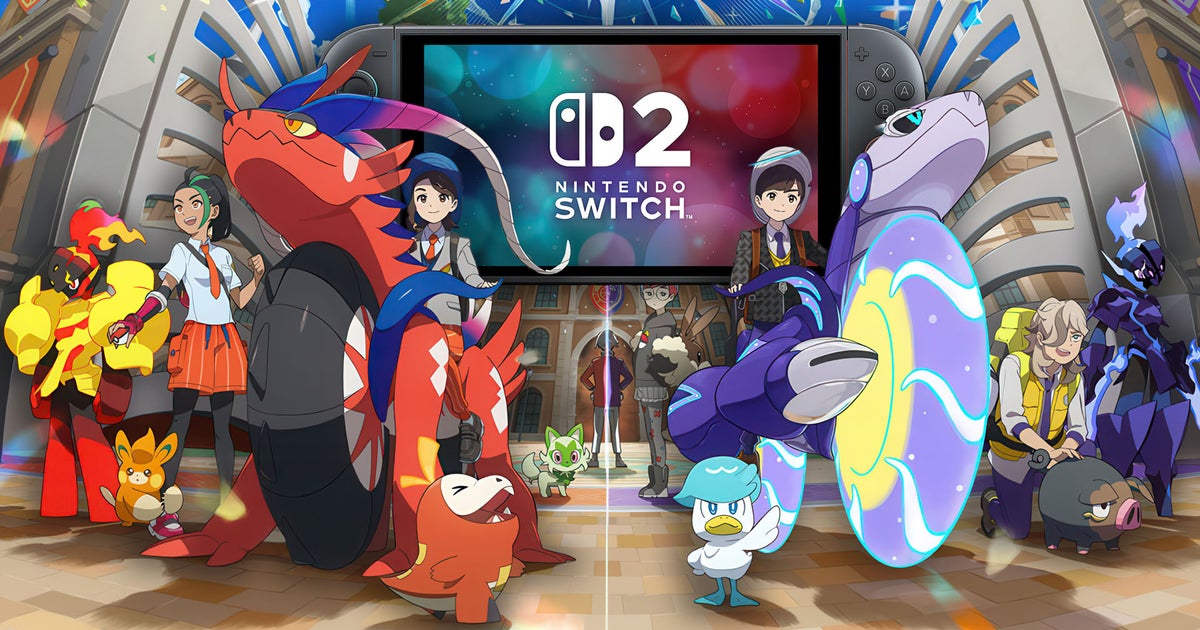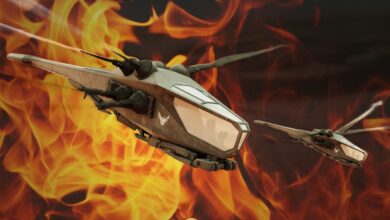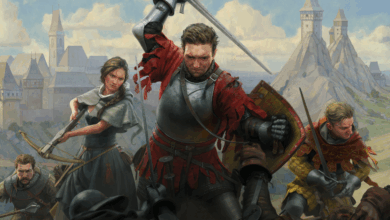Switch 2 revitalises Pokémon Scarlet and Violet with better performance and image quality

Pokémon Scarlet and Violet, Game Freak’s 2022 mainline Pokémon games, had infamously poor visuals. Rudimentary lighting, low-res textures and stiff animation afflicted these open-world efforts, while performance dropped below the 30fps target nearly constantly and image quality also suffered. Technically, they were a failure by any reasonable standard, even on the power-constrained OG Switch console. Now the Switch 2 is here and these games have the potential to run significantly better – but what changes does the free Switch 2 upgrade Nintendo is offering actually deliver?
The largest visual difference in Scarlet and Violet on Switch 2 lies in image quality. The original game ran between 720p and 1080p in docked mode, and about 576p to 720p portably, without anti-aliasing treatment of any kind. That wouldn’t be too offensive-looking necessarily for a game with a relatively small scale, but for an open world with vast views and plenty of ultra-fine details to resolve, it was a nightmare scenario. The updated version benefits from clean, temporally-treated visuals in comparison, with a vastly more stable rendition of its world. The game looks genuinely quite solid now in image quality terms, and even holds up well on a 4K television set. Shimmering is mostly a thing of the past, and aliasing artifacts are generally absent, especially in still shots.
The actual resolution counts are still reasonably low, with a 1080p internal resolution for docked play (without DRS) scaled up to 4K and a ~648p figure for handheld play (with DRS) scaled up to 1080p. Both modes seem to use a relatively cheap form of DLSS in performance terms, based on characteristic image breakup on moving objects we’ve observed in other Switch 2 titles like Fast Fusion. That means image quality can dip in more challenging scenes, but given the relatively sedate pace of Pokémon, it still marks a huge improvement in final image quality, especially in the sharper docked mode.
The other obvious visual improvement comes down to frame-rate. Violet’s Switch 1 incarnation was an infamously poor performer, often hanging in the mid-20s during open-world exploration. Cutscenes often ran even worse, and the game would occasionally hang with a long frame-time spike. I’ve seen worse performers on Switch, but the combination of crude visuals and poor frame-rates in a Switch-exclusive game was exceptional.
Switch 2 is a huge improvement in docked mode, aiming for and usually hitting a 60fps frame-rate target. There are relatively frequent dropped frames while traversing the open world though, little 33ms blips that pop up when traveling through certain areas. This is obviously far preferable to the original Switch’s performance profile, but it’s a little bit disappointing that the deployment of the advanced T239 processor can’t bring the game to a solid 60. There are occasional dips elsewhere as well, like with certain combat moves in battle.
In handheld mode you can expect a similar update, which counts to around 60fps in my offscreen testing with high frame-rate footage. You can still feel small frame-time spikes as you drive around the environment, but it’s generally fine.
The game’s animation update rates have also been greatly improved. On Switch 1, distant characters and objects often ran with heavily decimated animation – eg a distant windmill might update twice a second. Getting closer gradually increased the update rate, though the structure only updated at full rate with the rest of the game once you were extremely close, only a few metres away. Characters were badly affected as well, producing some pretty incredible results.
Switch 2 appears to be completely liberated from this issue. At any distance, you seem to see full update animation, an improvement that likely depends on the Switch 2’s greatly upgraded CPU. We also spotted more monsters spawning in while walking or driving through matched areas on Switch 2, which is good for collectors and perhaps a bit more annoying for anyone just trying to traverse.
Finally, loading times are much faster. Fast travelling around the world took a fair bit of time on Switch 1, but on Switch 2 we get up to a 4.4x speed-up, with travel loads lasting just a few seconds. Loading times in general seem greatly improved on Nintendo’s new console, which is great to see.
There are a lot of elements, however, that haven’t been upgraded for Switch 2. Draw distances and pop-in are generally the same across both platforms, for instance. Pokémon also still aren’t persistent after they leave a certain radius from the player, which doesn’t really match player expectations for open-world gaming. Low-res shadow maps remain, though shadow filtering looks a touch more refined, and texture resolution also appears unchanged, with low-res examples and crude normal maps visible at close range and artificial-looking tiling scenery at distance. Distant textures do at least resolve with higher resolution mipmaps, so there’s greater texture detail at a distance, even if the base asset is identical.
Elsewhere on the no-change list, there have been no upgrades to the aliased and low-res full-screen stills that are used occasionally during cutscenes, nor have the pre-rendered videos been touched. The games doesn’t support HDR at all either, though this is more understandable given that it wasn’t authored to do so. The game’s underlying visual tech is still poor in places: there’s no SSAO, indirect lighting quality is poor, animations are stiff and awkward, and models appear basic and low-fidelity.
There are a few nice touches, like the Zelda-style grass, but the game generally still resembles an early Xbox 360 or PS3 title. The original Switch wasn’t the most powerful hardware around by any means, but it could still pull off visually impressive and artistically sound open-world efforts that ran at reasonable frame-rates, and it’s a shame that such a long-running franchise wasn’t allowed sufficient development time and resources to achieve the same. Game Freak’s graphics techniques and engine technology ultimately haven’t kept pace with the transition to HD consoles. The engine used for these mainline Pokemon titles does not seem well-suited to delivering a credible open-world game with modern fidelity, given its current gameplay and graphical limitations in the Pokémon games.
The Switch 2 offers enough power to blast past some of the game’s technical issues on the original Switch unit, however. Image quality and frame-rate concerns have largely been ameliorated by the faster hardware, producing a decent rendition of Scarlet and Violet. There’s no doubt that it’s a huge visual upgrade, though it’s arguably not enough to produce a visually satisfying version of the game. Scarlet and Violet are massively enhanced on Switch 2, even if the visuals are still uninspiring. Pokémon fans would be well-advised to check this one out.



